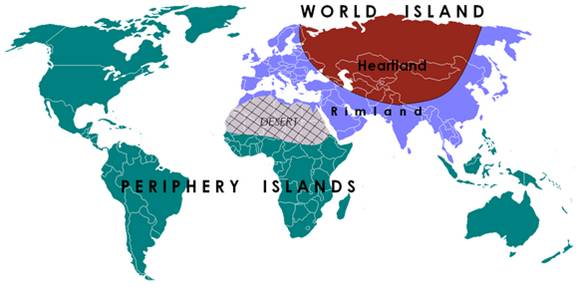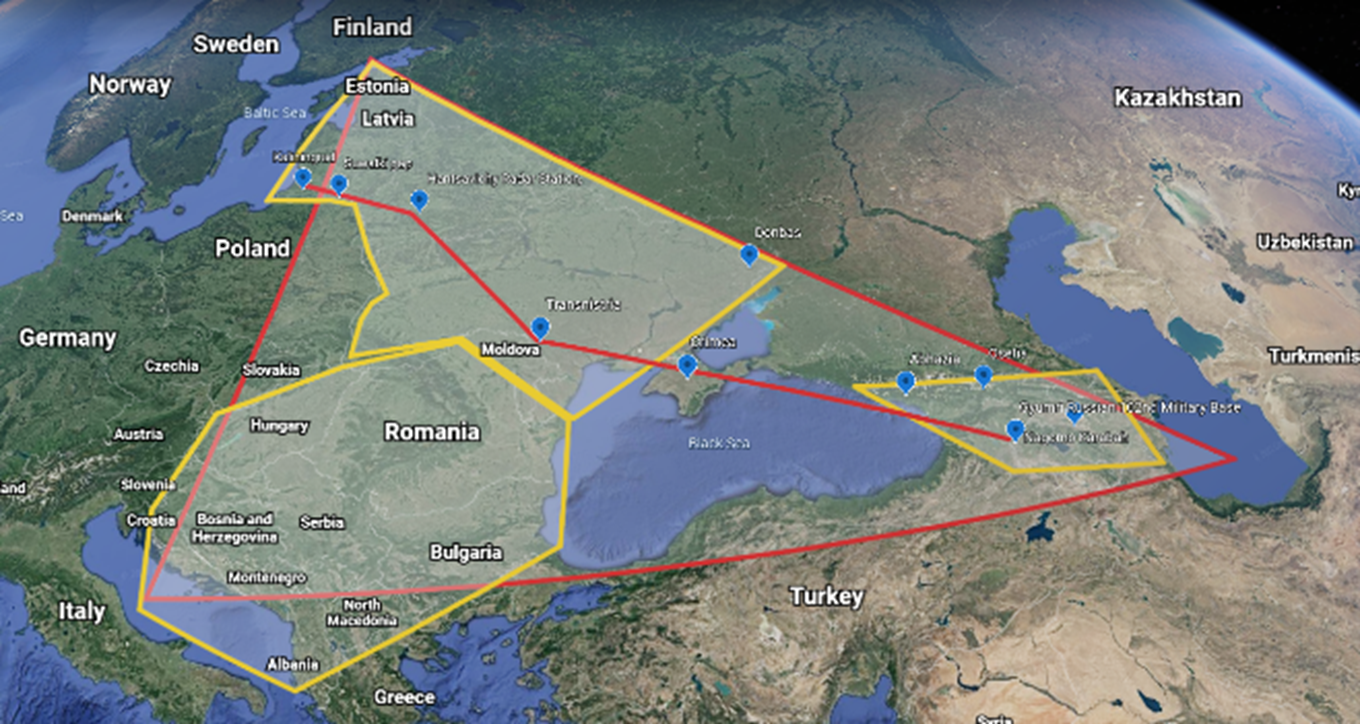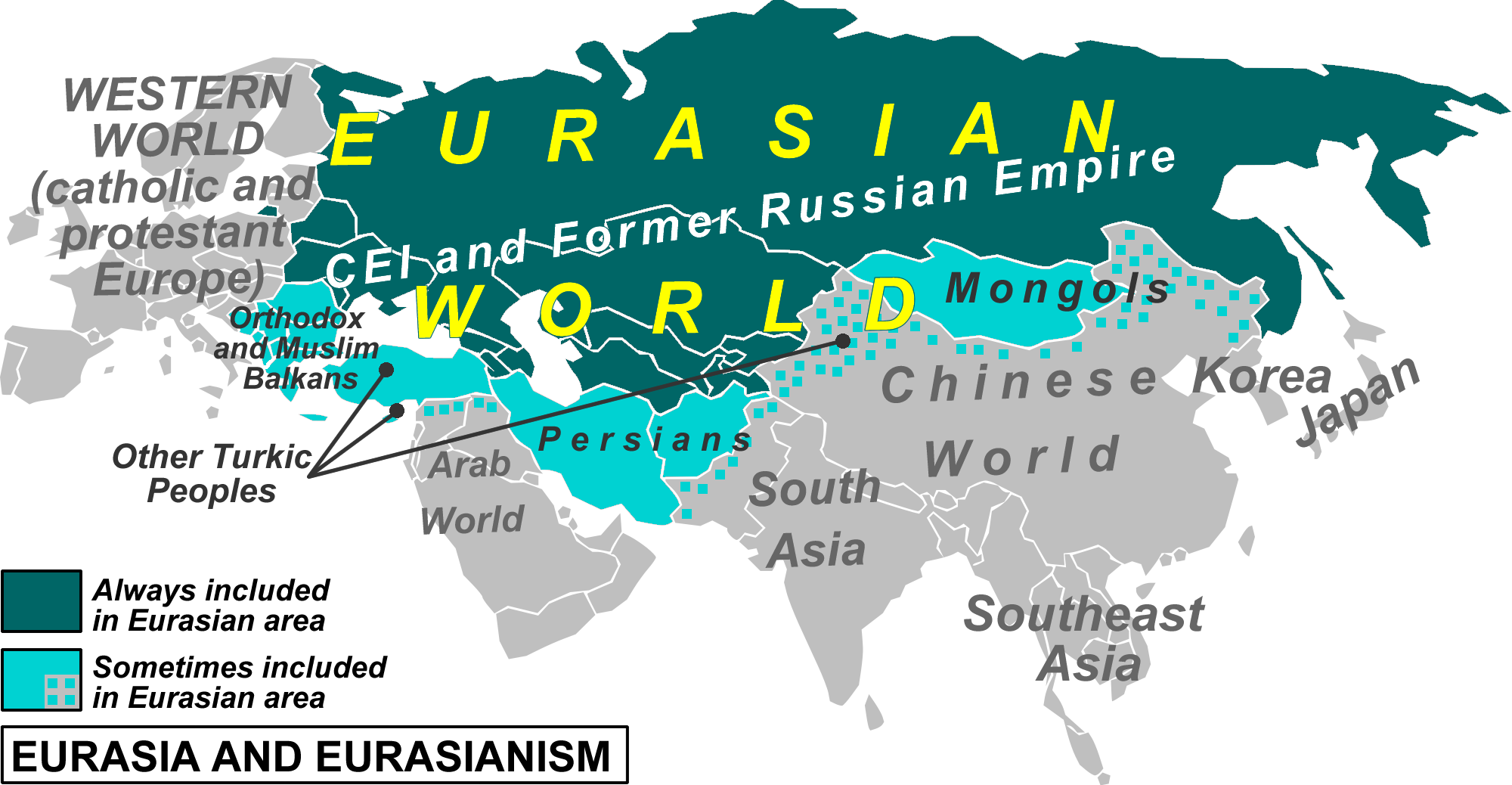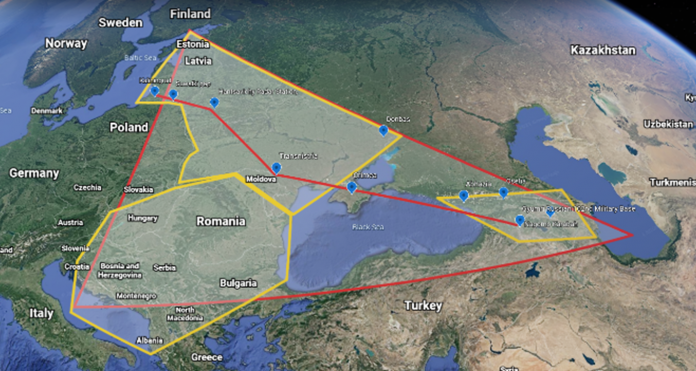Probably the title intrigues you, so I will try to explain in this first part who are illegitimate children of Eurasia, why illegitimate and what is exceptional.
Eurasia is the largest continental area on Earth comprising 93 countries, 5 billion people (70% of the global population) and representing 36.2% of the total area not covered by water. Geographically, Eurasia is a single continent. The concept of division into 2 distinct continents, Europe and Asia, dates back to antiquity, and their borders are geologically arbitrary. In ancient times, the Black Sea and the Marmara Sea, together with their associated straits, were seen as separating the continents, but today the Urals and the Caucasus and the Caspian Sea are seen as the main boundaries between the two.
In 1904, Sir Halford John Mackinder, an English geographer, academician and politician who is considered one of the founding fathers of geopolitics and geostrategy, sent an article to the Royal Geographical Society entitled The Geographical Pivot of History. exposes for the first time the theory of the heartland.
According to Mackinder, the surface of the globe can be divided into the Global Island / World-Island / Heartland – the surface of the continents Europe, Asia and Africa and the Outer Islands / Offshore & Outlying Islands – the surface of the continents of North & South America, Australia & Oceania as well. and Rimland or the coast and islands that stretch along the Heartland such as the British Isles, Japan, etc.
Mackinder summarized his theory as follows. Whoever rules Eastern Europe commands the Heartland; who rules the Heartland commands Eurasia; who rules Eurasia rules everyone.
To better understand his theory please see the following map.

Any power that would control the World Island would control 70% of the world’s resources and therefore the whole world. The size and central position of the Heartland made him the key to control of Eurasia and therefore of the World.
Now let’s go back to our illegitimate children. These are the countries of what we call Eastern Europe in the area between the Baltic Sea to the north, the Adriatic Sea to the west and the Caspian Sea to the east. Let’s call this Intermarium space generic. Of course, the name is inspired by the name of the initiative of the Polish Marshal Pilsudski (brought back to the forefront of foreign policy of the region) who proposed after the First World War the restoration of the Polish-Lithuanian Union through a federation between Poland, the Baltic countries, Belarus and Ukraine to create a political power large enough to withstand the pressures of major geopolitical forces that clashed in this region of Eurasia such as Russia, Germany and the Ottoman Empire (Or another empire that would rule the Arab world of the Middle East).
We used this term Intermarium over a larger area than the one in the mind of the Polish Marshal in which the Black Sea occupies the central place, balancing between the Caucasus in the east, the Balkans in the west and the former Soviet Union Latvia and Estonia) to the north, which I propose to call the Soviet group. They form a triangle with the Black Sea in the center and the peaks in the Baltic, Adriatic and Caspian seas. On all three sides of the triangle are great geopolitical forces, made up of huge human energies, very different from each other and applying pressure on each side of this triangle in order to extend its influence and finally to govern this space about which Mackinder said was the key to mastering the heartland.

To the east-northeast is Russia. Russia is a predominantly terrestrial power, for the time being (until the Arctic Ocean completely thaws and Russia makes a similar US & China fleet) with limited access to warm water ports and a small naval fleet of 145 million people. , a Christian-Orthodox majority, the world’s second most powerful army, controlled the Intermarium area for 45 years in the 20th century. It lost control at the end of the Cold War and is now returning stronger and stronger to try to regain at least the area of the former Soviet states where it still has great political, economic and cultural influence through the presence of significant ethnic Russians, the Russian language. spoken by the majority of the population of the former Soviet states, trade, the presence of the Russian army and military control in which Russia excels. Russia can be identified almost perfectly with the Heartland by its position on both continents. Europe and Asia occupying the vast expanse of Siberia, the northern part of the East the Ural Mountains, the Caucasus Mountains and the Eastern European steppe.
To the south is the Turkish world, the world of the former Ottoman Empire, an ethnic group of over 170 million people, mostly Muslims, whose traces can be traced from Bosnia and Albania by ethnic Turks, Gagauz, Tatars, Azeris, Uighurs, Uzbeks, Kazakhs, Hazars and Mongols all Turkish ethnic groups up to the Korean Peninsula as a strip of human energy that if coordinated from one place can play a central role in the great game of Eurasian rule. One hundred years after the fall of the Ottoman Empire, the Turkish world is showing signs of returning to empire politics and trying through Turkey to rebuild a new imperial vision of its own world. The Turkish world is predominantly a world of the Heartland by its positioning mainly along the central area of the Heartland.

To the west-northwest is the western world, of the ancient Roman empire of antiquity whose legacy was taken over by the Catholic Church on a spiritual level and by various political hegemons of the western world such as the Holy Roman Empire of Germanic nation founded by Charlemagne ( Charlemagne), Napoleonic France or Germany in its attempt to dominate Europe in the first half of the 20th century but also through its economic prevalence and the predominant political influence in the European Union today. The Western World is a conglomeration of nations that builds on and identifies with a system of common values of the Catholic & Protestant Christian type as well as those springing from the Renaissance, Humanism, Enlightenment and the Industrial Revolution that profoundly marked the Western world and created a system. of common beliefs and values what we now call Western Civilization. Today, the Western world includes, in addition to the nations of Western Europe, the British Isles and the 2 major countries of North America, the United States and Canada. This fact, as well as the positioning of the western world centered in the North Atlantic (see NATO / NATO-North Atlantic Treaty Organization) on the two shores of the Atlantic (the peninsula of Europe and North America) makes the western world a world of the rimland, manifested mainly by naval power and control of the seas rather than the land.
And only now can we define our illegitimate children, the Balkans, the Caucasus and the Soviet Group. These countries or nations are the result of the incredible European crucible of human energies, first of all the 3 great energies described above West, Turkey and Russia that meet in what I called Intermarium, the triangle of the Black Sea delimited by the Baltic, Adriatic and Caspian. None of these countries are or do not belong completely to any of the 3 major energies that influence them but are deeply marked by all 3 major regions, of course in different proportions.
The Baltics are Indo-European speaking peoples, Finno-Ugric Estonians, decisively influenced by Germanic and Nordic culture, Estonians & Latvians being predominantly Lutheran and Lithuanians predominantly Catholic but with a strong Russian-speaking minority of about 1/3 of the total population and who find themselves trapped like a vise between the Russian enclave of Kaliningrad and Belarus, a predominantly Russian-speaking country. Ukraine is divided between the Russian-speaking world of the east and the Catholic world with Polish-Lithuanian ethnic elements of the west. orthodox and where everyone hates and quarrels with everyone. The Caucasus is in turn divided into 3 small countries, suffocated by the 2 great neighbors Russia and Turkey who have shared in turn throughout history the control of the area which continues to be an area of permanent conflict and competition between the 2 hegemons.
In short, the entire Intermarium area is characterized by small, weak, divided, developing states that are perpetually facing pressure from the 3 directions of the great regional hegemonies the West, Russia and Turkey. This has been the case for the last 2000 years, and it will certainly be so for at least the next few centuries, until a great hegemon can completely and definitively rule Eurasia. They do not completely belong to any of the 3 great hegemones and at the same time they have something of each. All the 3 hegemons have mastered in turn this space in which they continue to be in competition and which space is in permanent transition from one hegemon to another.
That’s why I called them illegitimate children because they have the characteristics of illegitimate children, whether they live with one parent, the other, or a grandfather or aunt, they are not fully recognized by any of the 3 big families who dispute them. but neither of them wants and it cannot grant the other competitor the right of guardianship over these small states on the border between them. All these illegitimate children are frustrated by their fate and they all dream of “big” although the definition of “big” in this area is undoubtedly insignificant at the level of the 3 big regional hegemons.
What does exceptional mean at the level of these illegitimate children? It means being able to overcome their small and insignificant status, it means standing out in a positive way of course globally, it means moving to the status of developed, rich states and it means being able to play geopolitically at a higher level. to punch above their weight so that separately or together they will be able to face the pressures of the 3 great hegemones in controlling or mastering them and using them against their own interest but exclusively for the interest of that hegemon.
In the following parts we will deepen in turn the 3 micro-regions within the Intermarium, the Balkans, the Caucasus and the Soviets, we will see their characteristics and we will try to estimate the capabilities of each to become an “exceptional state” or not in the next 20 years.
Create an account
Welcome! Register for an account
A password will be e-mailed to you.
Password recovery
Recover your password
A password will be e-mailed to you.
Saturday, October 11, 2025




